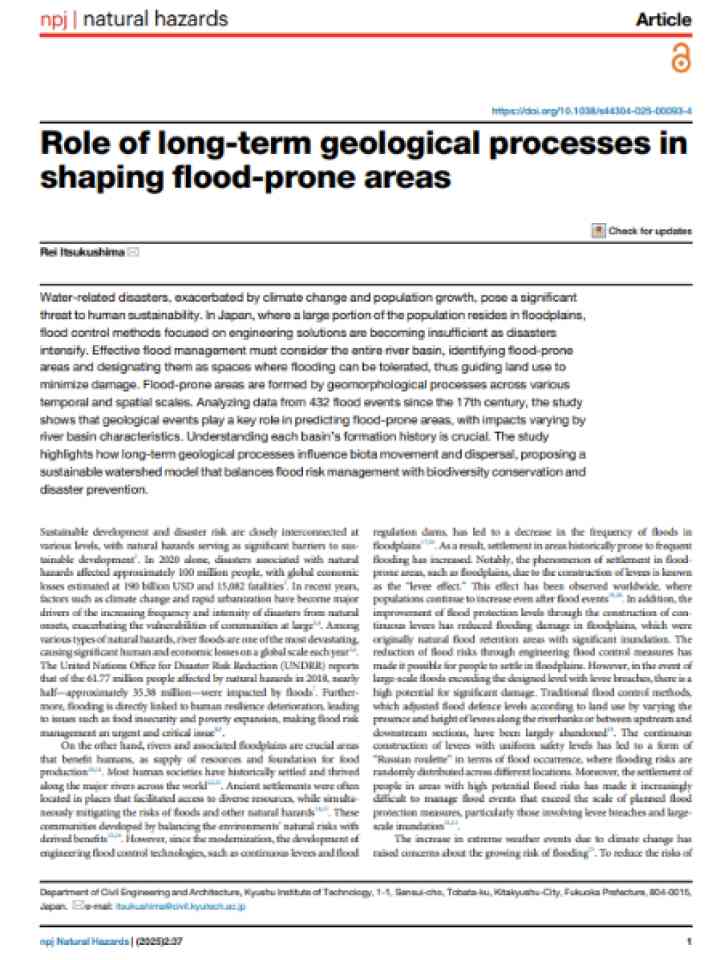Role of long-term geological processes in shaping flood-prone areas
Water-related disasters, exacerbated by climate change and population growth, pose a significant threat to human sustainability. In Japan, where a large portion of the population resides in floodplains, flood control methods focused on engineering solutions are becoming insufficient as disasters intensify. Effective flood management must consider the entire river basin, identifying flood-prone areas and designating them as spaces where flooding can be tolerated, thus guiding land use to minimize damage. Flood-prone areas are formed by geomorphological processes across various temporal and spatial scales.
Analyzing data from 432 flood events since the 17th century, the study shows that geological events play a key role in predicting flood-prone areas, with impacts varying by river basin characteristics. Understanding each basin’s formation history is crucial. The study highlights how long-term geological processes influence biota movement and dispersal, proposing a sustainable watershed model that balances flood risk management with biodiversity conservation and disaster prevention.
Explore further
